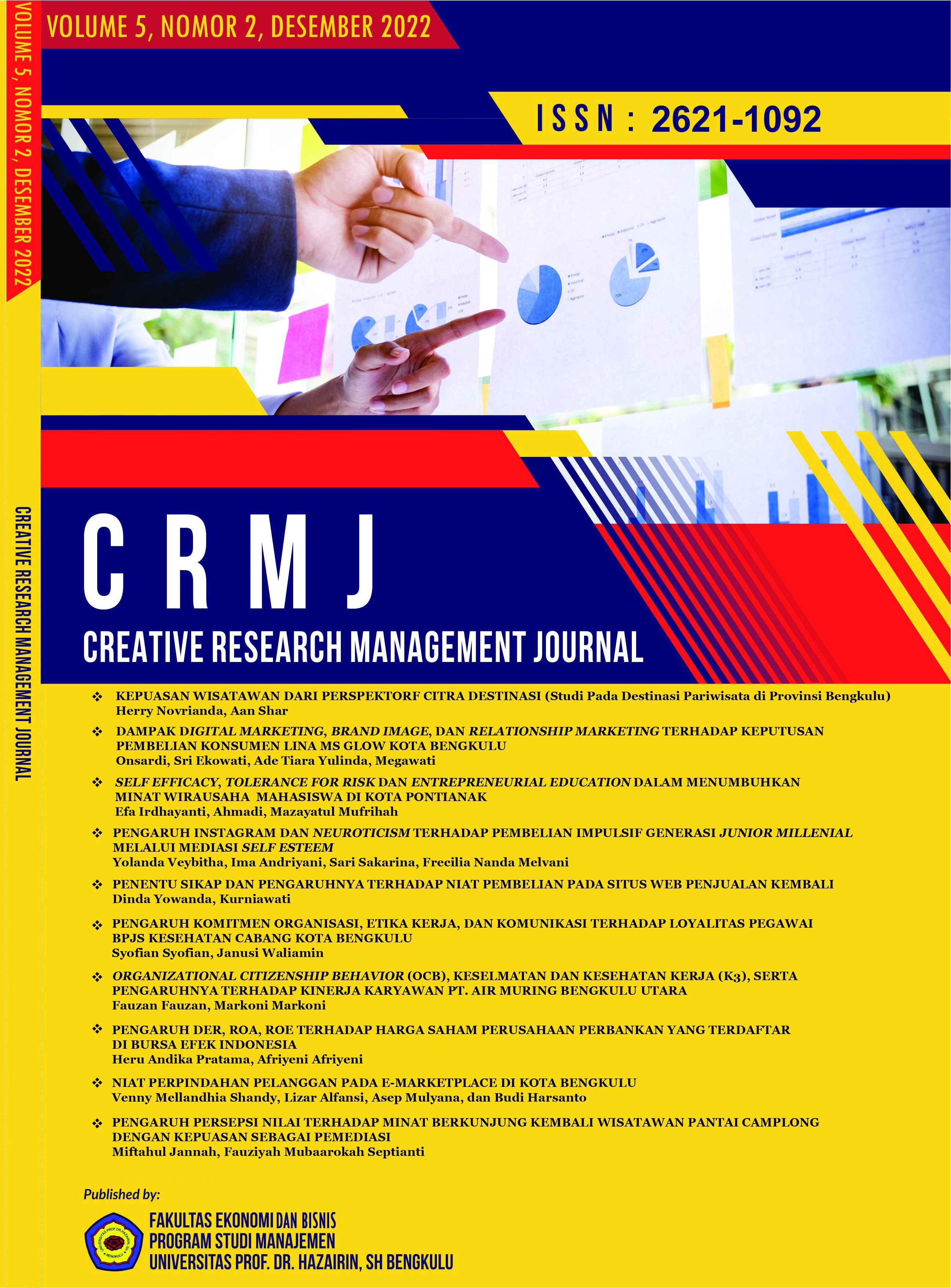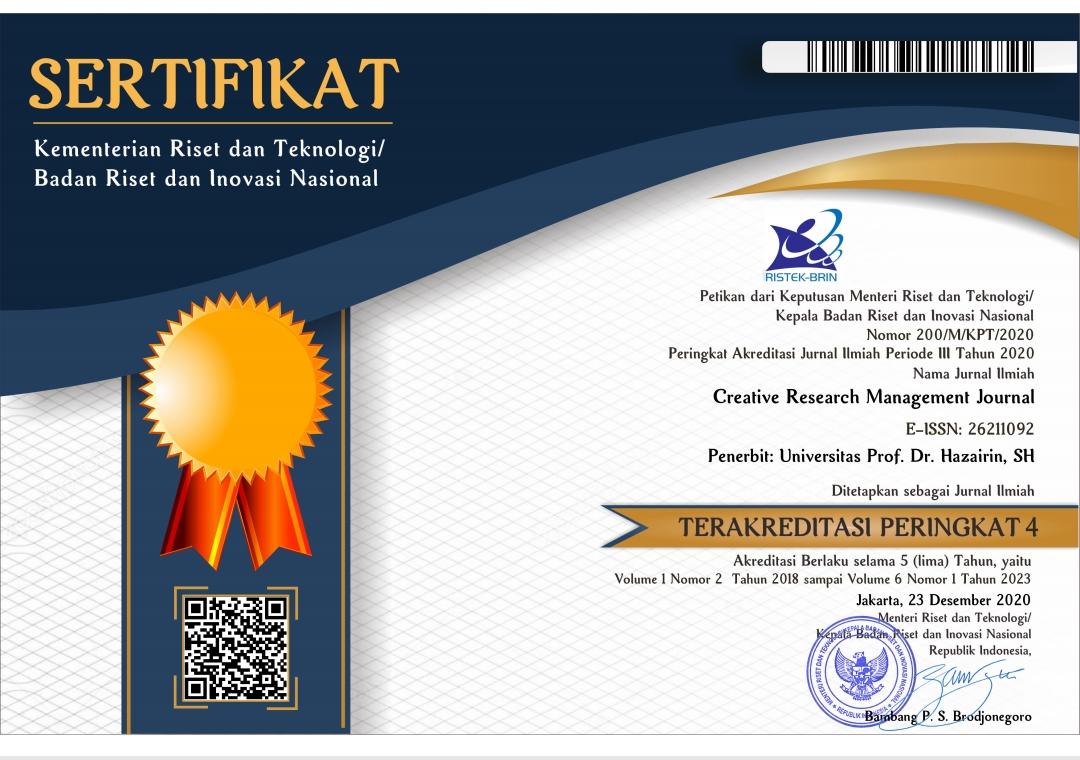PENGARUH INSTAGRAM DAN NEUROTICISM TERHADAP PEMBELIAN IMPULSIF GENERASI JUNIOR MILLENNIAL MELALUI MEDIASI SELF ESTEEM
DOI:
https://doi.org/10.32663/crmj.v5i2.3128Keywords:
Instagram, Neuroticism, Self Esteem, Impulsive BuyingAbstract
The purpose of this study is to find out the psychology of the millennial junior generation in several big cities in Indonesia who are intensely using Instagram and have an impact on their impulse buying. This study uses quantitative methods. The analytical technique used is SEM (Structural Equation Model) with LISREL software. A total of 390 junior millennial respondents (born 1991-1998) filled out an online questionnaire using a google form. The results showed that instagram had an insignificant direct effect on impulse buying. However, Instagram has a significant indirect effect through self-esteem on impulse buying. Neuroticism has the greatest influence on the impulse buying of millennial juniors. Based on the calculation of the indirect effect, it can be seen that self-esteem in this study is fully mediated for the instagram and neuroticism variables. Thus it can be concluded that Instagram has an important role in the psychological formation of the millennial junior generation. The intensity of excessive use of Instagram can lower self-esteem so that they compensate for these feelings through impulse buying. The limitation in this study is that it only uses one personality characteristic of the five existing personalities. The contribution of this research is to strengthen Murk (2006) self-esteem theory as a development of Rosenberg's (1989) theory. In addition, the results of this study can also be a recommendation for online business people who aggressively advertise their products through Instagram in order to choose the right marketing strategy.














